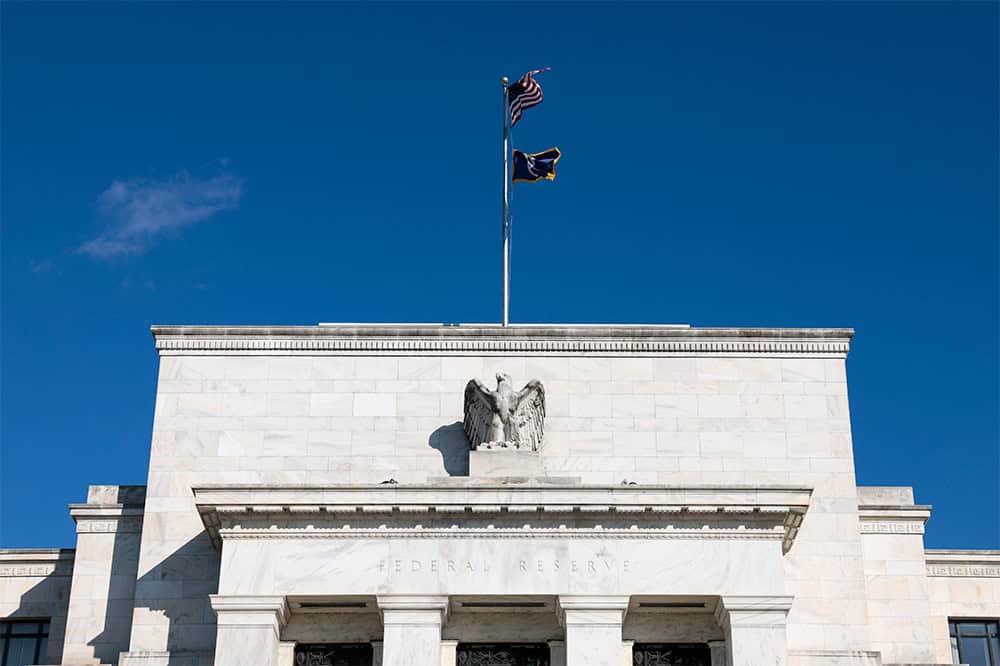CBO Director Discusses Inflation, Interest Costs, New Reconciliation Proposal, and America’s Unsustainable Debt
Last Updated July 29, 2022
This week saw a nonstop stream of policy news and economic developments. The Federal Reserve announced another .75 percentage point interest rate increase to battle high inflation. Senate Democrats released a new reconciliation legislation proposal, dubbed the Inflation Reduction Act of 2022. New economic growth data showed inflation eating up nominal gains, netting a quarterly decline, as experts monitor for signs of a recession. The Fiscal Confidence Index fell to an all-time low, with heightened voter concern about the national debt. And the Congressional Budget Office (CBO) Wednesday released its 2022 Long-Term Budget Outlook, which shows the national debt nearly doubling over the next 30 years, with the government’s net interest costs becoming the fastest growing budget category.
To illuminate what the latest indicators mean, connect the dots, and discuss how CBO analysis helps policymakers understand our economic and fiscal landscape, CBO Director Phillip Swagel joined Peterson Foundation CEO Michael Peterson for the latest Economic Forum.
The Fiscal Danger of Inflation
Swagel explained how inflation, which in the United States just reached its highest level in nearly 41 years, affects all parts of the federal budget. He said while high and rising inflation increases revenues, it also increases government spending costs and those two factors roughly balance out. What tips the scales, he noted, are interest costs that are projected to rise steadily over the next 30 years to a record 7.2% of GDP. Interest is also projected to cost a total of $8.1 trillion over the next 10 years.
“With high inflation, interest rates tend to be higher,” Swagel said. “We have a pretty moderate interest rate path, and yet interest costs are rising very steadily and importantly over the tenure and 30-year horizon. And so that is the fiscal danger, the carrying cost of the debt.”
In terms of the impact of fiscal policy on inflation, Swagel said the necessary federal pandemic response continues to spur demand and spending, but noted other global macroeconomic factors.
“There's lots of supply challenges still, both food and energy prices since the invasion of Ukraine have gotten worse. Inflation was high before the invasion of Ukraine, it's gotten higher since then,” he said. “When the rest of the world is having a problem, that probably increases demand for dollar assets, it makes the U.S. look pretty good. And that will tend to keep the dollar strong and hold down U.S. inflation.”
Inflation Reduction Act of 2022 and New GDP Data
While CBO has not yet evaluated the reconciliation legislation introduced this week, Swagel discussed the ways that CBO will analyze its components, including tax, climate, and energy provisions.
The authors estimate the legislation would contribute $300 billion to deficit reduction, including projected savings from allowing Medicare to negotiate prescription drug prices, as well as ramped up IRS enforcement to close the gap between taxes owed and taxes collected.
On the latter, Swagel said CBO will seek to understand and base its estimates on how much of new IRS funding would be used on areas like customer service as opposed to enforcement activities like audits and litigation. In its evaluation, Swagel said CBO will, account for the tight labor market factoring into how quickly the IRS could hire employees to implement ramped up enforcement.
Similarly, on the $369 billion climate-related provisions of the proposal, Swagel said some of the budgetary improvements may fall outside of the 10-year timeframe used to develop a cost estimate of the legislation, but that CBO would advise lawmakers in that event.
On the state of the economy, Swagel said that the new second quarter data, showing that real GDP fell at an annualized rate of 0.9%, is a reflection of high inflation.
“What's going on with inventories is driving the negative growth. The labor market is still pretty tight,” Swagel said. “For us as analysts evaluating the economy, it is just a mix — slowing but still with some positive aspects to it.”
Daunting Budget Outlook
No matter how long the current bout of high inflation persists, Swagel emphasized that the fiscal trajectory remains daunting and becomes more challenging over time.
“We're on an unsustainable path. The fiscal trajectory requires action,” he said. “It requires action over time to avoid the risks of slower growth, more interest payments that go to foreigners, the risk of a fiscal crisis vulnerability increased interest rates, and more. The sooner the action is taken the less painful, the less difficult, will be the consequences of that action.”
Without action, Swagel noted that interest spending will continue taking up an increasing portion of the budget, crowding out resources for “everything else.”
According to CBO’s new outlook, interest costs will become the fastest-growing federal budget category, and fuel a cycle of higher debt, deficits, and interest costs that deplete resources for investments, emergency response, or preparedness.
“Higher debt translates into higher interest rates,” he said, adding that also means higher interest costs, which are caused “about 50/50” by a larger debt base and the higher rates that apply to larger debt.
Aside from eventual policy action to stabilize the debt and interest costs, Swagel said lawmakers should focus on other aspects of the structural imbalance between federal spending and revenues. He said the safety net, particularly public healthcare and Social Security, should be strengthened, which could be done through revenue raisers and benefit adjustments over time, ideally when the economy is strong.
“Right now neither program is financially sustainable into the future,” he said, noting, for example, that CBO projects Social Security’s insolvency around 2033.
Swagel said that the ongoing impacts of the pandemic will also persist as a longer term fiscal and economic issue.
“It’s a real challenge,” he said, noting that the tragic increase in mortality, along with a decline in fertility and immigration, will continue to have an economic impact. “There's still about 2 million people who are missing from the economy as compared to the pre-pandemic trajectory. We're going to be living with the impacts of the pandemic into the future.
Image credit: Getty Images
Further Reading
Growing National Debt Sets Off Alarm Bells for U.S. Business Leaders
Debt rising unsustainably threatens the country’s economic future, and a number of business leaders have signaled their concern.
What Is R Versus G and Why Does It Matter for the National Debt?
The combination of higher debt levels and elevated interest rates have increased the cost of federal borrowing, prompting economists to consider the sustainability of our fiscal trajectory.
High Interest Rates Left Their Mark on the Budget
When rates increase, borrowing costs rise; unfortunately, for the fiscal bottom line, that dynamic has been playing out over the past few years.


